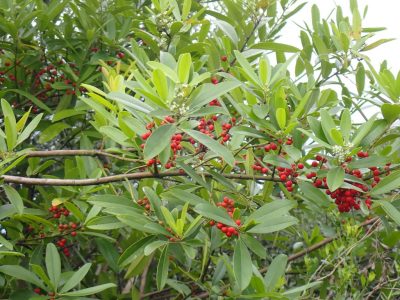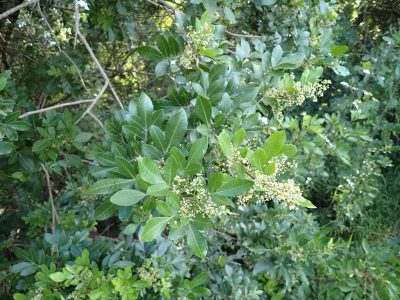
Dahoon Holly
Hello, EcoFlora participants and inquirers! It’s time for a new EcoQuest.
For the months of September and October, we will be doing something a little different. We usually center our EcoQuests on certain plant families, but for this quest, we’ll be looking for species on the FISC list. If you live in Florida, chances are you have seen some of these species right in your own backyard.
So, what is the FISC List? It’s the Florida Invasive Species Council’s list of invasive plants. You might be familiar with its old name, FLEPPC (Florida Exotic Pest Plant Council). The name was recently updated to reflect more accurate terminology. Terminology and categorization are crucial when it comes to invasive species. The new FISC list of invasive species is divided into two sections: Category I and Category II.
Category I plants are the most severe. This is measured by displacement of native species, or by the disruption of a stable native ecosystem.
Category II plants are invasive plants that have not yet disturbed or displaced habitats or species but are reproducing outside of cultivation. These plants have the potential to become Category I plants if left unchecked, so both categories should be treated as a threat.
Currently, there are 165 species on the FISC list. This list is updated every two years to include any newly introduced species and to reclassify the severity of existing invasive species.
Some of the species we’ll be on the lookout for include the widely known Brazilian Pepper Tree (Schinus terebinthifolius), Caesarweed (Urena lobata), and Rosary Pea (Abrus precatorius). We will also be highlighting some of the “charismatic” invasive species that are commonly found in landscaping and in the Florida plant trade. These include:
Category I
- Pink Silk Tree (Albizia julibrissin)
- Surinam Cherry (Eugenia uniflora)
Category II
- Golden Pothos (Epipremnum pinnatum cv. Aureum)
- Mother of Millions (Kalanchoe x houghtoni)

Brazilian Pepper flowers
So, why should we care about documenting invasive species? By utilizing apps like iNaturalist, we can help natural land managers track the spread of an invasive plant. By doing so, we are better prepared to stop it from spreading further. Economically, invasive species management is a laborious and expensive endeavor. For example, it costs the state of Florida over $200 million annually.
One of the best ways to help the fight against invasive species can happen right from your home. By removing known invasive species from your garden and planting native alternatives, you are helping to restore habitat. Plant nurseries throughout the state have a large variety of Florida native plants that look just as nice as, if not better than, their invasive counterparts.
We hope you will join us to learn more about our local ecosystems and how they are being impacted by invasive species. You can find dates, locations, and sign-up information for upcoming Bioblitzes here or by emailing us at ecoflora@selby.org.
